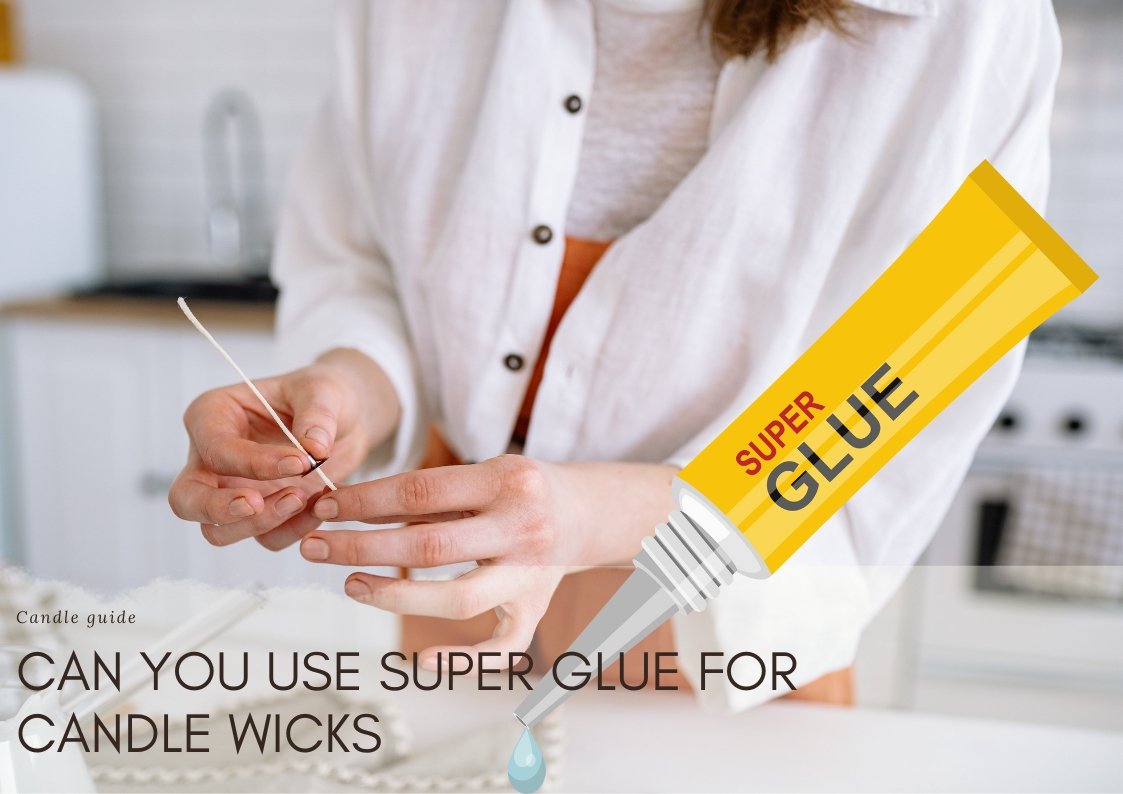One of the most important steps in candle making is to centre and glue the wick. You can purchase special glue dots to hold your wick in place and buy wick centring devices. But if you're just making a candle for home use or as a souvenir, you don't need these special tools and glues.
Securing the wick is a very important step that should not be skipped, because if you fail to secure it, it can start to move around on the fully melted wax, increasing the risk of fire.
Gluing can be done using a simple hot glue gun (although care should be taken to use a glue stick with a high melting point) or other heat-resistant glues, like gasket glue. But can we use superglue to fix the wick?
At first glance, superglue may seem like an excellent choice: it's easy, cheap, quick and likely to be found in everyone's home.
If you want to glue a wick, the most important requirement for an adhesive is heat resistance. Therefore, to answer our question we need to find out how well the superglue can withstand high temperatures.
Most commercially available superglues are based on a material called cyanoacrylate. Most of these binders start to lose their binding strength at around 212° Fahrenheit (about 100° Celsius), and if they are heated any further than that, they will release completely.
What can cause problems?
Paraffin wax - which is one of the most commonly used materials for candles - will turn to liquid at about the same temperature, but while the candle is burning (especially when the wax is running low) it can be even hotter around the wick. For this reason, superglue is not a reliable bonding agent for candles, as the wick can loosen which can lead to a fire hazard. Beeswax-based candles have a much lower melting point (at around 145° Fahrenheit, or 65° Celsius), but they can also heat up enough to dissolve the superglue during prolonged use.
There is another problem with the use of superglue in candles: the chemicals it contains are converted by high heat into so-called Hydrogen Cyanide, a highly toxic compound. (S little interesting fact: this is the poison used by the French troops against German soldiers during the First World War - but of course a small dot of superglue can’t produce lethal quantity of this toxic fume).
As you can see from the above, using superglue is not a good idea, not only because it can lead to fire hazards but also because it can lead to poisoning. When choosing a glue to make your candle, pay particular attention to the temperature range up to which the manufacturer recommends the use of the adhesive. A glue stick with a high melting point, special engine-grade heat-resistant glue or a binder developed for candle making will be a much safer solution!
All in all, you can see that securing your wick is crucial so it requires special attention. Make sure to choose a heat resistance option which will securely hold your wick to create good quality and truly safe candles.



